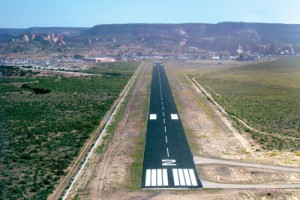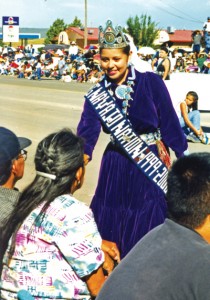By Greg Brown
Magic! The whining of gyros gave way to mystical drums and rhythmic chanting, crazily mixing images of flight with those of ancient and sacred ceremonies. Chills traveled our spines; we could scarcely have been more astonished if we’d arrived by flying carpet.
Adventurer Richard Halliburton would have appreciated our situation. After hitching around the world by freighter and camel in the 1920s, he became obsessed with visiting remote Timbuktu, the legendary mid-Sahara caravan stop. The way to get there, he decided, was by “Flying Carpet,” a black-and-crimson Stearman he bought and shipped to England in 1931. From there, with pilot Moye Stephens, he traveled the ancient world, captivating princesses and paupers alike with first airplane rides at exotic places like Baghdad, the Dead Sea, headhunter country in Borneo, and yes, Timbuktu.
It’s tempting to look back at those times and think we missed the real adventure of flying. Well, we didn’t. Flying was out of reach for all but the wealthiest people in Halliburton’s day, so his audience could enjoy flying only vicariously through his writing. Today we get to live exploits Halliburton’s readers could only dream of—piloting our own flying machines, on our own adventures.
On this particular day, our flying carpet had taken us to a place many would find as mystical and exotic as Timbuktu—Window Rock, Ariz., capital of the Navajo Nation, where my wife and I had invited friends for a day exploring the annual Navajo Nation Fair.
Our journey carried us from the Sonoran Desert near Phoenix, over mountains festooned with Ponderosa Pine to the remote high-desert Navajo homeland, with its exotic wind-sculpted rock formations culminating in Monument Valley to the north.
Beautiful and varied as the flight was, nothing could have prepared us for Native American drums filling the air upon arrival, beckoning us to the fair’s parade in progress only a quarter-mile away. We were captivated by sights Halliburton would have appreciated—lovely Indian princesses on horseback, accompanied by their courts, and senior ladies of the tribe with their massive traditional squash-blossom necklaces of silver and turquoise.
Mystical dancers flashed colorful feathers, prancing to rhythms everyone in the audience seemed to know but us. We strained to understand the parade announcer until realizing our difficulty comprehending wasn’t the garbled sound system, but the Navajo language transmitted through it. Ninety minutes had carried us a whole world away from home. Tell me that’s not magic.
Alongside traditional costumes and Navajo cowboys marched high school bands, church groups and country-western combos—even the Shiprock Detention Center had its float. It was just enough like our own Midwestern hometown parades to make the contrasts all the more exotic.
Cultural differences were subtle, but definite. Men distributed candy to each young admirer individually, softly saying, “Good morning… Thank you for coming.”
The children laughed, squealed and ran for goodies like kids at any parade. Only later did my wife observe that during the entire visit we never once heard a child fuss or cry.
This spectacle would have pushed thoughts of flying to the remotest corners of my mind, had it not been for rumbling dark clouds displacing brilliant blue sky from the Northwest. By the time we walked to the fair and dined on “Navajo tacos” of fry bread, beans and vegetables, the wind was howling, and our novice passengers were asking with concern, “Will we make it home tonight?”
“Don’t worry about that until it’s time to leave,” I told them.
After all, if you limit your flying by what might happen on the return trip, too many great adventures pass you by. Better to make safe weather decisions one leg at a time, and accept an occasional night away from home as the price of adventure.
We wandered the fairgrounds, admiring everything from giant squash to Indian jewelry, and were en route to the Powwow dance competition when the thunderstorms fulfilled their threats with an hour-and-a-half downpour, crowding us with herds of fairgoers under shelter with the smell of damp straw and murmur of soft talk.
Later we slogged through mud back to the airport, just in time for another downpour. Worse yet, the terminal was locked, with its only telephone inside. “Fat chance these friends will fly with us again,” I thought, as the four of us huddled cold and wet under an awning, knowing the only two hotels in town were full. Fortunately, a passing family loaned us their cell phone so I could get a briefing. Although a massive area of thunderstorms blocked our route home, Gallup, with its motels, was accessible in better weather to the Southeast.
Once airborne, however, a cheery voice from Albuquerque Center offered us guidance around the weather, via east and south. Although it meant flying from one tentative destination to another, we ultimately made our way all the way home VFR, steering like a pinball to avoid silvery towering cumulus, their dark shafts of rain punctuating green mountain views on either side.
With skies clearing toward home, I suddenly remembered our nervous passengers. “Are you two okay?” I asked, turning around.
“Are you kidding?” they replied in unison, grinning from ear to ear. “This is incredible!” The rain and mud hadn’t discouraged them, nor had the turbulent flight. We touched down in the orange glow of a Western sunset, and were home in time for dinner.
Richard Halliburton’s flying carpet might have been more colorful than ours, but I doubt he had many better days of adventure than this one.
Author of numerous books and articles, Greg Brown is a columnist for “AOPA Flight Training” magazine. Read more of his tales in “Flying Carpet: The Soul of an Airplane,” available through your favorite bookstore, pilot shop, or online catalog, and visit [http://www.gregbrownflyingcarpet.com/].

Final approach to Window Rock, Ariz., capital of the Navajo Nation. The fair is visible to the left of the runway.












